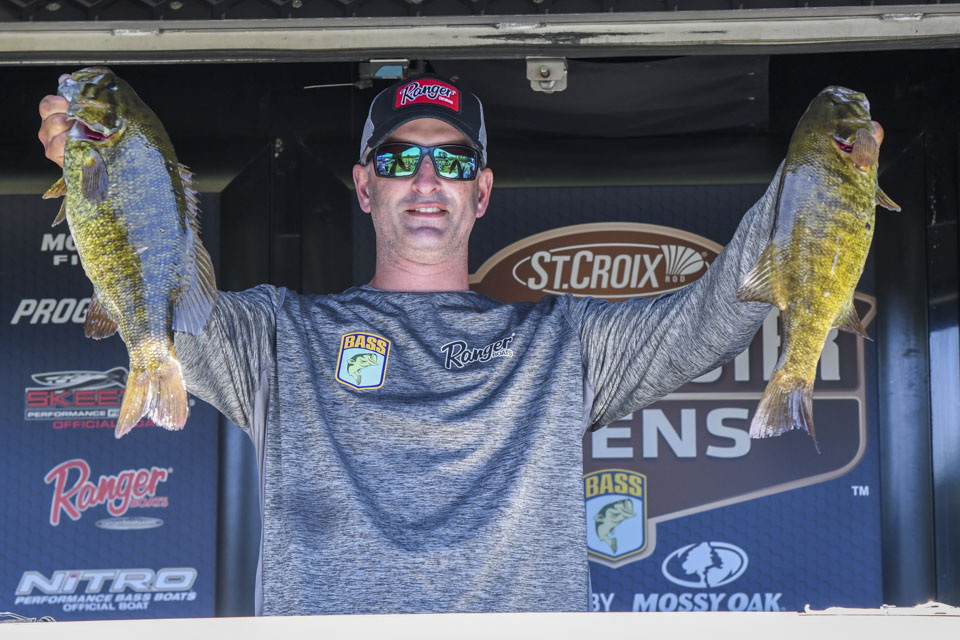
Awareness plus adaptation equals advancement. Several anglers expressed this wisdom point during the Day 1 weigh-in.
Starting atop the leaderboard, Kenny Mittlestaedt led the field by adjusting to the week’s conditions and pursuing a plan other than what he had originally envisioned. Doing so delivered a leading limit of 20 pounds, 7 ounces.
Making his third visit to Oneida, Mittlestaedt had planned on fishing offshore, but as he studied the week’s forecast for mostly sunny skies and relatively calm conditions, he recognized and exploited a shallow pattern he has often employed in his Minnesota home waters.
In sixth place with 18-7, New York pro Casey Smith took more of a big picture approach. As he explained, the explosion of round gobies has, in recent years, altered predator behavior and required different Oneida strategies.
“I’ve spent a lot of time on the lake, and I had a tough tournament last year. I really had to relearn the lake,” Smith said. “It’s changed a lot. I got really specific, and I think that was the difference between doing well and doing average.
“Oneida has gone from a baitfish lake to a goby lake. There’s no schooling anymore like there used to be. They eat gobies and, because of that, the way they set up has totally changed.”
Smith couldn’t divulge his bait details, but he noted that one specific finesse bait allowed him to leverage the fish’s goby-focused feeding.
Harvey Horne, who splits a three-way tie for 27th with Cooper Gallant and Bassmaster Elite Mike Iaconelli, made a key early morning adjustment that set up his day and got him on track to catch a limit of 16-15.
“In practice I spent a lot of time looking for places that would hold actively feeding fish,” the Arkansas pro said. “The first place I started (on Day 1), they weren’t where I’d found them in practice; they’d moved about 100 yards.
“I found some fish that were feeding on the perch that were eating the hatching mayflies. That kinda keyed me in on what I needed to do early.”
Contrary to the common topwater approach, Horne caught his early fish on a Ned rig.
“I was fishing on the bottom where the perch were eating the (emerging) mayflies,” he said.
After about an hour, that early bite tapered off and Horne transitioned to his initial plan of targeting the bass that were feeding on crawdads and bluegill. Running this pattern the rest of the day rewarded Horne with a competitive bag.
“Thursday was nothing like I anticipated, but I ended up catching fish all day long,” Horne said. “Both places I fished were community holes, but I wasn’t fishing the same stuff everybody else was.
“I found some stuff that was away from the big community hole; it was there, but not there. The key was making those adjustments and sticking with the plan.”





